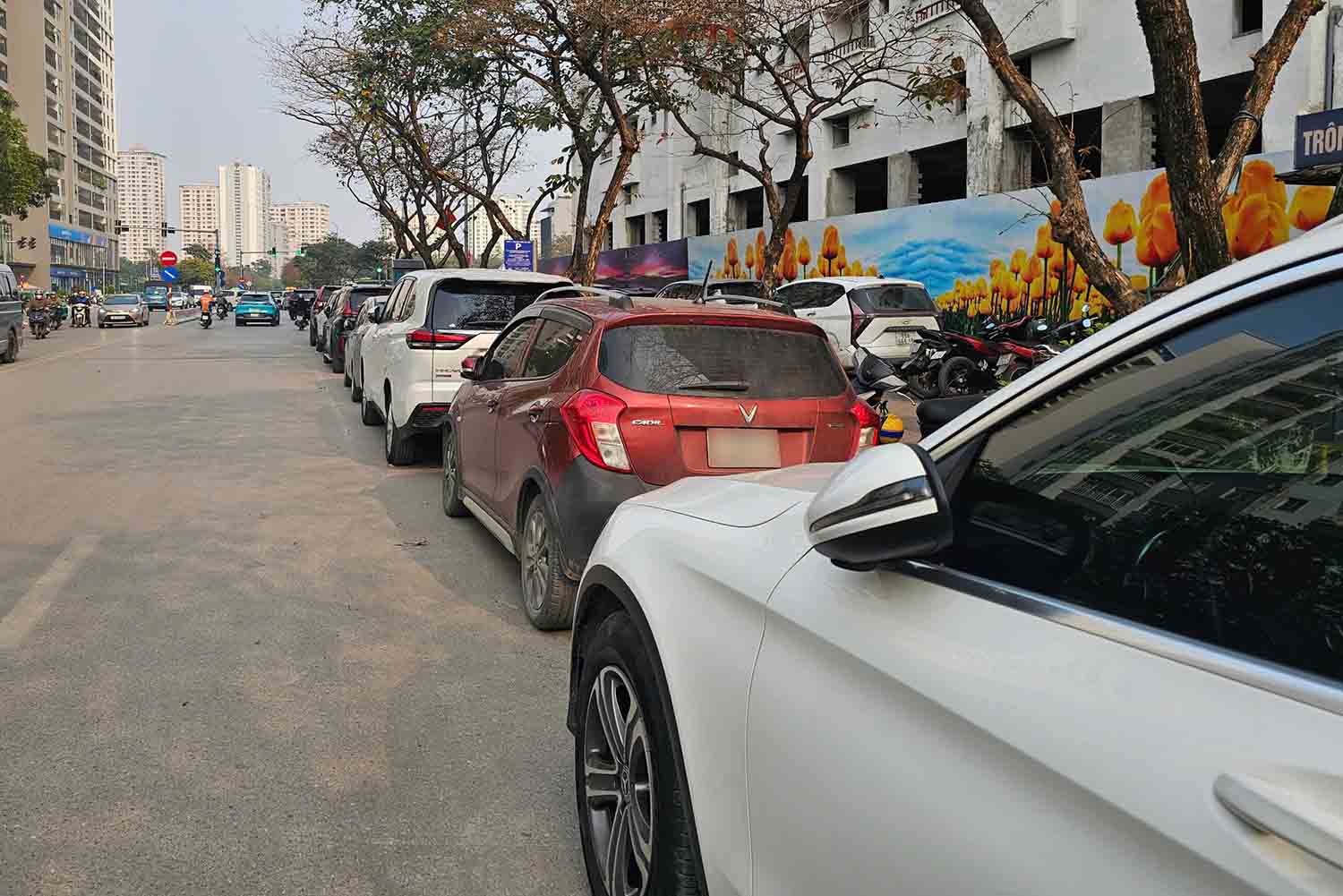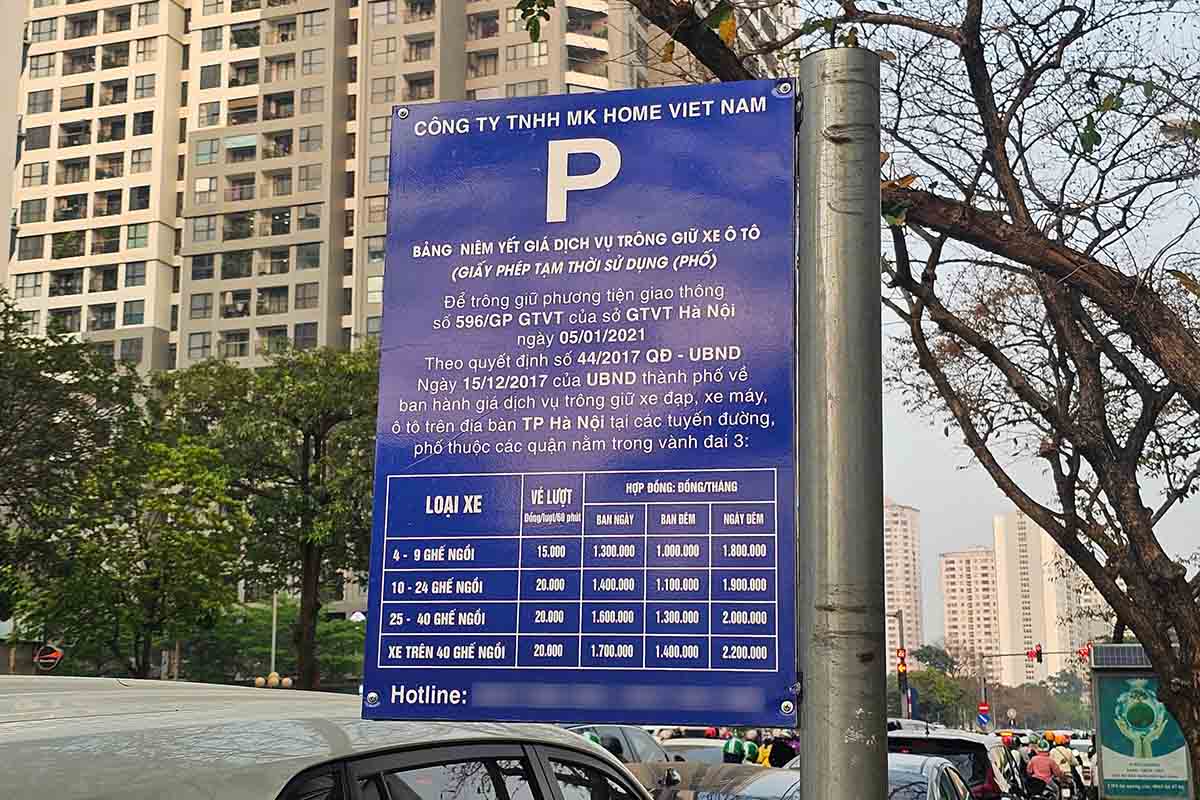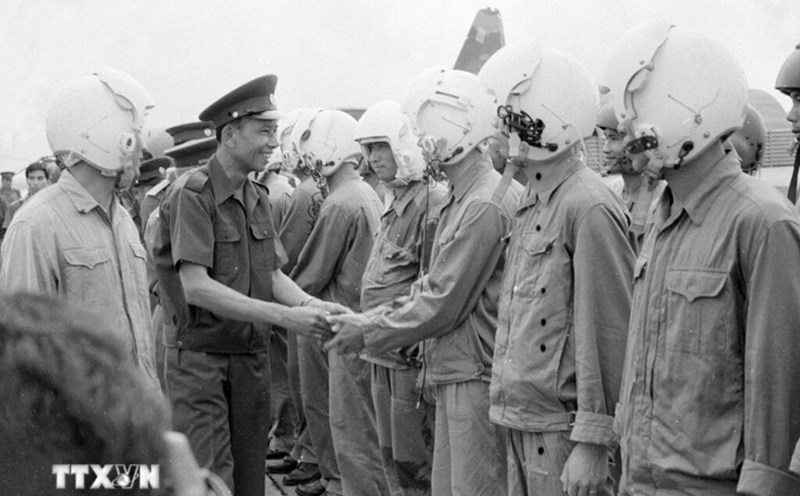Talking to Lao Dong, a leader of the Hanoi Department of Construction said that the city currently has very few new parking lots on the road and sidewalk, but only extended and maintained the old locations because there is no more room for exploitation.
According to the leader, the state budget collects relatively stable fees from these parking lots, an average of more than 30 billion VND/year.

In 2021, according to statistics from the Hanoi Department of Transport, the total parking area managed by the city's units was 31,700m2 on 134 streets. The district manages a total parking area of over 91,000m2.
This year, the Hanoi Department of Transport collected about 46 billion VND in money for vehicle parking on roads and sidewalks to pay to the state budget.
The leader of the Department of Transport at that time said that the Department was licensed by the city to use roadways and sidewalks to park vehicles on the city's managed routes.
The fee collection rate is according to Resolution 06 of the People's Council and the entire fee collection is paid into the city budget.
The city does not have to allocate funds from the budget to organize vehicle parking. On the contrary, the city budget collects a fee from parking vehicles on the road and sidewalk every year, different from Ho Chi Minh City.
To avoid loss of revenue, the Department of Transport Inspectorate annually coordinates with the City Police, the Department of Finance, districts and towns to handle vehicle parking units in the violating area. Common mistakes are waiting for a car without issuing a ticket, waiting for the wrong time, range...

At the end of 2024, the Hanoi People's Committee issued Decision No. 6440 approving the list of routes and streets that are temporarily used part of the roadway to park road vehicles. 191 eligible roads and streets are added to the list.
Along with 43 previously licensed streets, Hanoi currently has 234 streets allowed to park vehicles on the road. Of which, Hoan Kiem district has the highest number of streets with 42, followed by Hai Ba Trung district with 32 routes, Cau Giay district 26, Long Bien district 20.
Decision 6440 also stipulates not to organize vehicle parking on national highways passing through urban areas, not causing traffic obstruction, affecting the daily life and activities of both sides of the street.
The road is organized for two-way traffic, if 10.5m wide, it is allowed to park vehicles on one side; the road is 14m wide and allows parking vehicles on both sides. If the road for organizing one-way traffic is at least 7.5m wide, vehicles can be parked on the right side of the road.
The parking lot must be at least 20m from the intersection, vehicles must park in a row in the direction of the vehicle; no stakes or ropes must be put up to block the road, and no pedestrian crossings must be obstructed at the crossings.
The city also stipulates that vehicles are not allowed to be parked in front of offices and some specific streets. The sidewalk location for vehicle parking must have a structure that ensures the ability to withstand vehicle loads, limiting peak hours from 6am to 9am and 4pm to 7:30pm.
However, the decision did not include a specific list of street sidewalks where parking is allowed.











